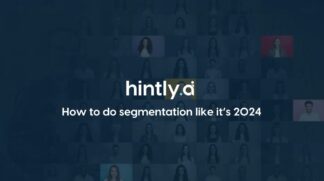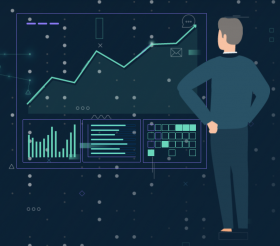It’s always the leads… Join us for this interview, where hintly’s Head of Sales, Ludvig Hammeken, explains how companies can improve sales...
FAQ
All data is secured on encrypted end-to-end GDPR friendly Google Cloud servers in Europe, wherefore everything is secured according to EU applicable rules and guidelines.
Hintly has developed its own API, wherefore it is possible to connect with almost all CRM systems.
Due to the fact that we look across the different verticals in the organizations combined with data from not only technographic, CRM, firmographic, behavioral, and signal data, we have built a platform that combines internal client data and external data on both micro and macro level. To this we add further filters such as Churn, turnover rate, industrial knowledge, ROI, macro level information, turnover size, Credit ratings, debtor risk, growth, key figures.
This ensure that we look at your data in a new way, with objective glasses instead of the old “gut feeling”.
Hintly has a data source directory, which forms the backbone of our IP.
In addition, we connect unique data sources based on the customers we work with, as we do everything in our power to increase the accuracy of our service constantly.
Hintly’s process takes place in 6 steps which are repeated until they are in place:
1. Sales meetings
2. Technical assessment meeting (clear overview of available data-sources within the company).
3. Contract in place
4. Technical meeting regarding implementation of data sources and return of output to CRM
5. Workshop with the sales team
6. Implementation of data-sources
7. Workshop with the salesteam regarding usage of data superpowers.
B2B intent data is any information that your business can collect relative to the behavior of a buyer or a particular group of buyers.
Specifically, the data relates to that buyer’s “intent” to do something, meaning it tells a story about what they are interested in and when they are more likely to buy.
You divide intent-data into three categories:
First party data:
First party data is the information you collect directly from your audience or customers. It includes:
- Data from behaviors, actions or interests demonstrated across your website(s) or app(s)
- Data you have in your CRM
- Subscription data
- Social data
It can also include non-online information such as completed surveys, customer feedback and other customer information stored in your CRM database.
Second party data:
Second party data is essentially someone else’s first party data. The seller collects data straight from their audience, and it all comes from one source. You can feel confident in its accuracy.
You purchase 2nd party data directly from the company that owns it. There’s no middle-man in such a transaction.
Second party data is similar to first party data, but it comes from a source other than your own audience.
Third party data:
Third party data is data that you buy from outside sources that are not the original collectors of that data.
Instead, you buy it from large data aggregators that pull it from various other platforms and websites where it was generated. These aggregators pay publishers and other data owners for their 1st party data.
The aggregators then collect it into one large data set and sell it as 3rd party data. Many different companies sell this kind of data, and it is accessible through many different avenues.
Let’s start somewhere else – if you don’t know your ideal customer profile (ICP), you look into a market as a blind person.
You do not know who you are looking for, other than what worked last time. You do not look for patterns, you just call. randomly.
Knowing your ICP helps you calling the right clients, who has a real need for the service you provide.



